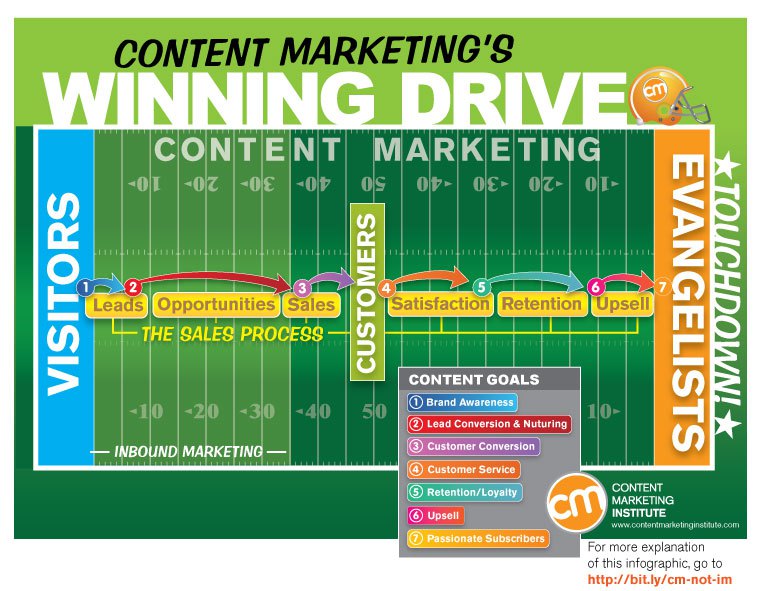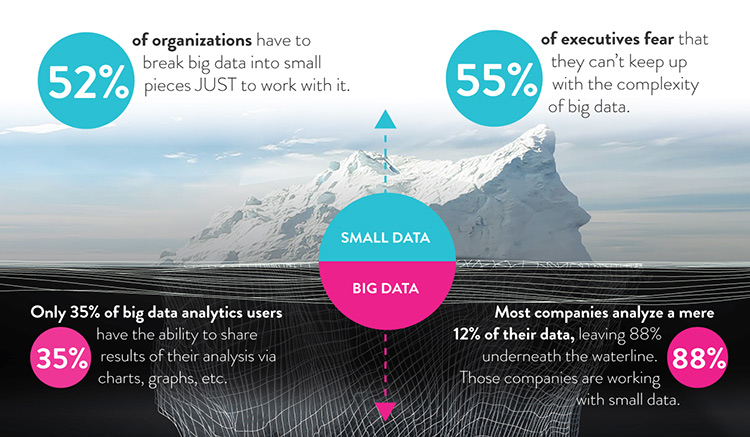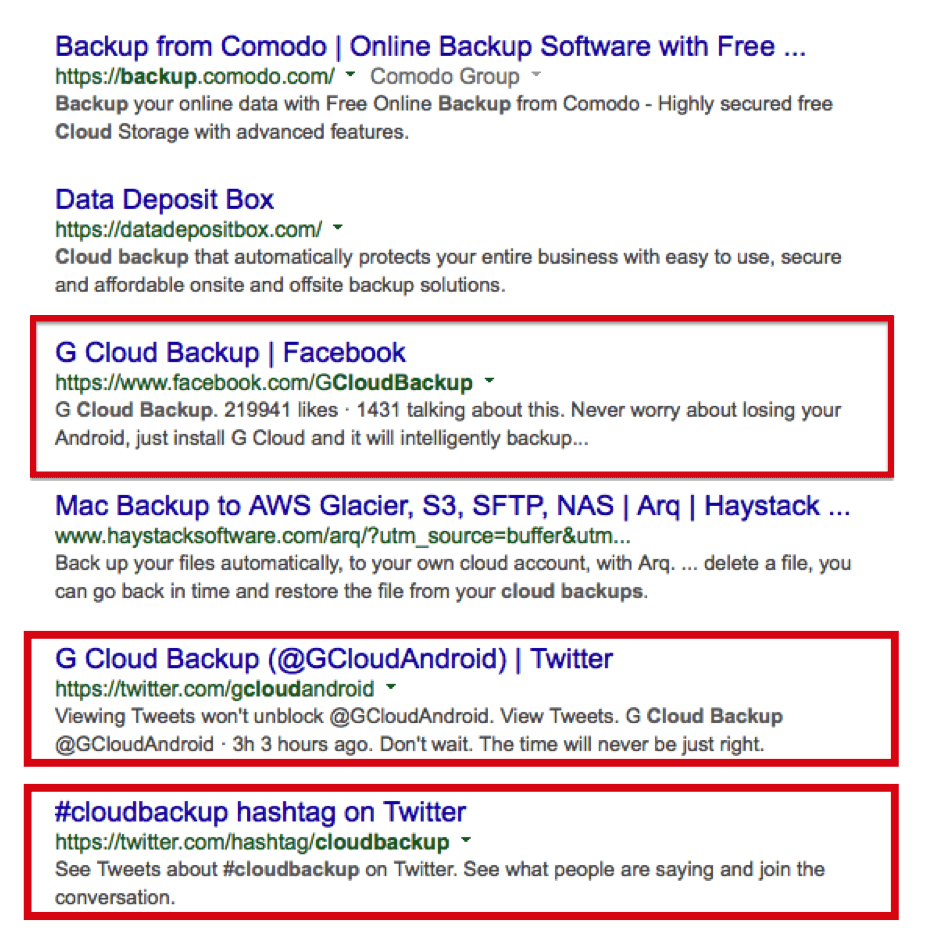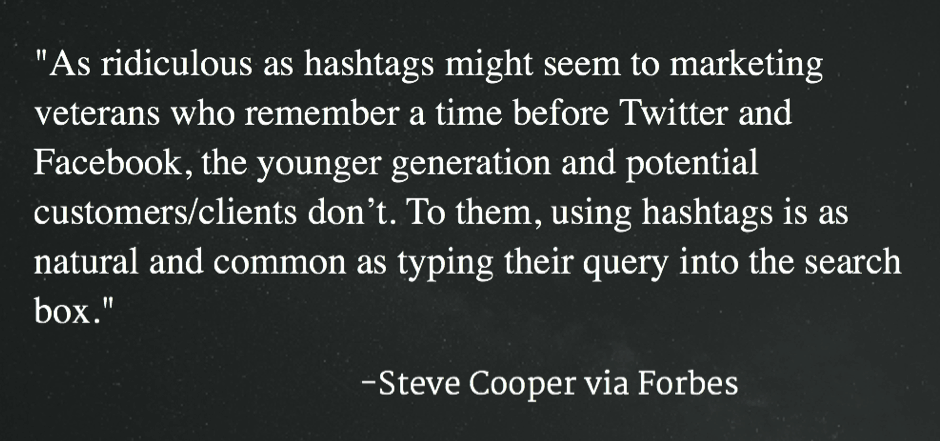Sunday 31 May 2015
Chobani founder latest to make the Buffett-Gates billionaire pledge
Friday 29 May 2015
Google and Levis to make smart clothing that interacts with your devices
Time Inc. erecting pay walls beginning with Entertainment Weekly
12 Ways to Make Your Inbox More Manageable
Email can be a huge time suck. And the more you send, the more you receive. But with a little organization, email can take up much less of your time.
The post 12 Ways to Make Your Inbox More Manageable appeared first on AllBusiness.com.
Infographic: The Science of Brands on Instagram
No other social platform provides an experience as incredibly focused and engaging as Instagram. With just a bit of creativity and thoughtful measuring, you can make some Insta-magic for your brand. In this infographic, discover the trends behind the big-brand Instagram experience and learn how you can catapult your company to new heights.
Click on the infographic below to view a larger image:
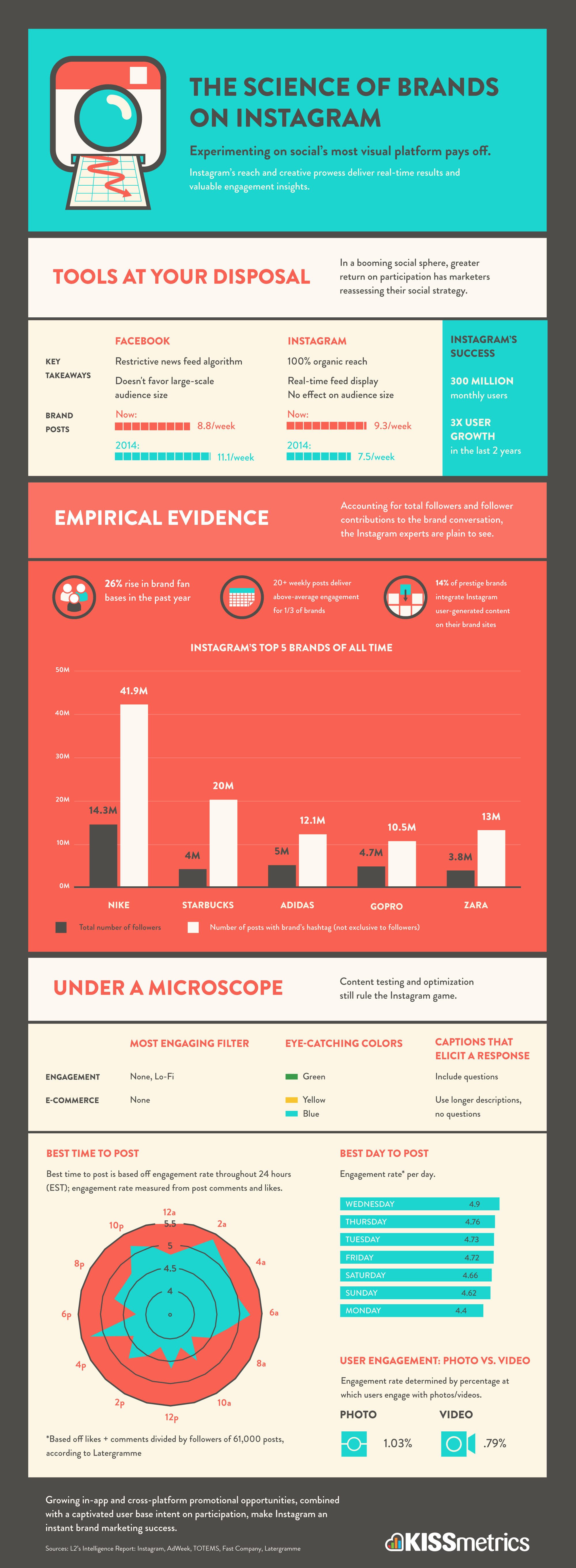
Want to display this infographic on your site?
Sources
- http://www.fastcompany.com/3029395/bottom-line/how-the-most-successful-brands-dominate-instagram-and-you-can-too
- http://list.totems.co/
- http://www.adweek.com/news/technology/report-brands-are-now-posting-more-instagram-facebook-163406
- http://www.huffingtonpost.com/2015/02/25/get-instagram-likes_n_6751614.html
The 21st Century Debate: Remote vs. Office vs. Co-Working
For years, there was only one type of office space to run a business. However, times are changing and there are now a number of options for business owners and employees to choose from.
The post The 21st Century Debate: Remote vs. Office vs. Co-Working appeared first on AllBusiness.com.
The Science of Brands on Instagram
No other social platform provides an experience as incredibly focused and engaging as Instagram. With just a bit of creativity and thoughtful measuring, you can make some Insta-magic for your brand. In this infographic, discover the trends behind the big-brand Instagram experience and learn how you can catapult your company to new heights.
Click on the infographic below to view a larger image:
Want to display this infographic on your site?
Sources
- http://www.fastcompany.com/3029395/bottom-line/how-the-most-successful-brands-dominate-instagram-and-you-can-too
- http://list.totems.co/
- http://www.adweek.com/news/technology/report-brands-are-now-posting-more-instagram-facebook-163406
- http://www.huffingtonpost.com/2015/02/25/get-instagram-likes_n_6751614.html
Thursday 28 May 2015
4 Common Errors That Kill Data-Driven Decisions
Data is more than just facts and figures. Data analysis can improve your business’s bottom line. Your team members may deviate from the intended purpose, but you can veer them back on track with the numbers. Avoid company mishaps by driving your managers toward data-driven decisions.
1. For the Love of Tradition
Humans are creatures of habit. Mainly, we play nice and follow the trail of our predecessors. However, business leaders should not rely heavily on the past actions of their companies. By following tradition and not the data, you could be stifling your company’s growth.
Source: The 7 Business Goals of Content Marketing: Inbound Marketing Isn’t Enough
Don’t get trapped in the ol’ days. For example, advertisements might be the long-standing marketing strategy for your business. But based on research by Roper Public Affairs, 80 percent of business decision-makers prefer to receive company information in a series of articles versus an advertisement. Be ready to adjust your strategy to transform your visitors into evangelists.
Tips to Support Data-Driven Decisions
- Brainstorming encourages innovation. Let departmental teams participate in What If… exercises to buck old habits.
- Learn from companies outside your industry. Partner with a nonprofit; cross-sector collaboration can offer new insight for stubborn challenges.
- Build a “non-traditional” culture. Give employees perks for developing unconventional ideas.
2. Iceberg (Data), Right Ahead!
In business, we sometimes focus too much on the surface elements, such as SEO, social media, or paid advertising. More Facebook ‘likes’ are great, but what does that really mean for your company’s brand? Managers need to dig deeper to understand the entire data story. Find the underlying factors that are driving your business forward.
Source: Infographic: Big Data Iceberg
For instance, if the data shows a need to rev up content marketing, don’t automatically assume that means more blog posts. Demand Gen Report’s research study found that the top 3 content formats that B2B buyers seek out to research a purchase decision include: Whitepapers (78%), Case Studies (73%), and Webinars (67%). Adjust to the data by learning all the pieces of the puzzle.
Tips to Support Data-Driven Decisions
- Encourage employees to explain the data process. Knowing how they got from point A to point B gives you a complete journey to the final results.
- Ask several why and how questions to rebut any assumptions.
- Realize data doesn’t belong to IT. Involve all employees in the metrics of the company.
3. Cooking the Data
Data should help you make a decision, not necessarily support a ready-made plan. Good managers can make bad judgment calls by offering data only to justify their decisions. This same issue became prevalent at one of the big tech companies—Microsoft. Executives hired researchers to lend credibility to the their decisions.
So, your team may be headstrong on selecting website color schemes. Redirect their attention to the 2014 Mobile Behavior Report: 54% of consumers believe that it is easier to find information on mobile-optimized sites. Furthermore, give your team projected outcomes of how this data offers value to the company.
Tips to Support Data-Driven Decisions
- Separate the research from the decision makers. Hire an external firm to provide your data analysis. Then, let an internal committee offer the results to the decision makers.
- Host a professional development seminar showing the dangers of cooked data.
4. A Little Bit Biased
Every business leader shows an inclination towards a particular outcome or idea. Cognitive bias can emerge when we make decisions based on limited information or apply non-relevant facts to a particular situation. One major example is groupthink—the desire for everyone to conform. Without any naysayers, your business could become stagnant.
Throw out the bias; instead, use the data as your competitive advantage. According to HubSpot, tweets posted around 4 p.m. Eastern time tend to get more retweets than those posted at other times. So, why would your social media team agree to post tweets at noon or midnight? Correct this bias with the data.
Tips to Support Data-Driven Decisions
- Audit everyone’s thinking with self-awareness drills.
- Play devil’s advocate. Conflicting information can challenge current beliefs and produce a better outcome.
Data can help your business if used correctly. Don’t let your company get bogged down with these common errors. From lackluster traditions to cooked data, you can guide your employees towards making sound, data-driven decisions—without the stubborn traction of a few. Refocus your team and benefit from the results.
About the Author: Shayla Price lives at the intersection of digital marketing, the law, and social responsibility. She inspires a new breed of innovative attorneys at Hearsay Marketing. Connect with her on Twitter: @shaylaprice.
U.S. green energy use highest since 1930s
My biggest investing regret
'Serial' podcast taking on two new cases
Another Online Marketing Opportunity is Knocking: Hello #HashtagSearch
Pop Quiz: Are you using hashtags in your online marketing campaign? If you answered yes, do you know why they are important? And do you know how they relate, if at all, to the SERP?
If you’ve passed over the hashtag because you view it as a fad, it’s time to revisit the concept. If you randomly add hashtags to your social posts as if you’re adding a dash of salt to your fries, it’s time to add some strategy to your hashtag game.
Just consider these stats from Social Media Today writer Pam Dyer:
“Only 24% of tweets include hashtags, but those that do receive twice the engagement of those without them. When used well, hashtags can be powerful tools that drive brand recognition, increase reach, build community, create buzz, and positively impact customer loyalty.”
Dyer is referring to hashtag usage on Twitter, but what about the almighty SERP? Can hashtags help a brand gain visibility for trending topics on Page 1 of Google or Bing? Yes, they can. Read on to get the straight facts about hashtags and the SERP.
Google+ Is Still A Relevant SERP Ally
While Google+ has the lame duck reputation for social media marketing, ignoring it is a poor choice, especially when it comes to posts showing up in the SERP. When Google Authorship was eliminated in mid-2014, many brands abandoned G+. That was a premature move. Just because Authorship is no longer supported in web search, this does not mean that G+ posts have disappeared as well, especially when it comes to hashtag searches.
Danny Sullivan from Search Engine Land touched on this topic and called it Author Rank.
What is it? G+ posts from trusted authors are still showing up in the SERP. Combine a related hashtag, and posts from other social channels and key influencers can appear as well. Let’s look at an example:
Search Query: #datastorage cloud
Organic Results:
The first social listing (which is the second item shown) is a tweet, and the fifth listing is a link to the Google hashtag search tool. Google has gathered everyone who is talking about that particular hashtag and has displayed them in one listing. If your brand is striving for relevance within a certain niche, wouldn’t it make sense to add a relevant hashtag to your content?
Do these results show up if you omit the hashtag from the search query? No, there are zero social links.
Search Query: datastorage cloud
Results without Hashtag:
A recent post from Ann Smart of Social Media Examiner outlined the value of Google+ posts with hashtags. Unlike other hashtag-enabled sites like Twitter, G+ actually curates content related to your posts. What that means is that they’ll serve up your posts in related searches. As Smart reinforces in her post, “It’s the additional related results that set Google+ hashtags apart.”
Your simple takeaway here is even if Authorship is dead, G+ should not be ignored. Use it, embrace it, and love it, especially combined with the use of hashtags.
Effective Hashtags Across Multiple Social Channels Can Improve Brand Visibility
One of Google’s most important factors for higher page ranking comes in the form of “the conversation.” This conversation is how people are connecting, discussing, and interacting with your brand. This factor comes in the form of the online currency of shares, tweets, +1s, likes, etc.
You can improve your own relevance in these conversations by embracing the hashtag. Even though this sounds like we’re beating a dead horse, don’t neglect the hashtag. Even Google has listed the hashtag as a search operator for improving results. Adding a hashtag strategy to your campaign will improve visibility for your brand, from Google to Twitter, Facebook, Instagram, and beyond.
Since our first search examples were dominated by Google and Amazon, let’s look at a keyword that gives other brands a chance.
Search Query: cloud #backup
Organic Results:
Three of the top six results are social channels. As it gets harder and harder to achieve Page 1 results, perhaps it’s time to pay attention to WHO is showing up there, and build a relationship with them.
Remember the advice that came out after Google launched Penguin and Hummingbird? “Don’t guest post for links, guest post for an audience.” If your brand submitted a guest post for an authoritative source related to a specific hashtag, the value in the post would supersede “link juice” if their tweet reached Page 1, and the tweet linked to your post or your website.
Again, do results vary when the hashtag is dropped from the query? Yes, social links disappear, again.
Search Query: cloud backup
Results without Hashtag:
Hashtags Make Your Brand A Bigger Part Of The Conversation
Using hashtags isn’t just about creating your own and hoping other people will catch on. It’s also about connecting with trends already present within the online and social media world and resonating with your own customer base or audience.
Search Engine Journal contributor Olga Andrienko brings this point home in a post she recently wrote:
“Using hashtags correctly makes you appear on-trend and tuned into current events. In other words, hashtags make you look relevant to your social media followers, and relevance is what makes them stick around.”
Hashtags and Google+: Your Ally To A Better SERP Result
The simple fact is that the more people talk about your company or brand, the better your ranking will get. Unifying your marketing campaign across social media using hashtags as the glue will bring it all together.
Your hashtag strategy should always start with Google+. Google explore tool gives you direct insight into topics and areas that are related to your most relevant industry topics. You’ll get a better understanding of what is being talked about online and how to be a better participant in that conversation. That connection will always get more people interacting with your brand online, give you insight on relevant groups that have captured your target audience, and contribute to your company’s inevitable ranking power.
Are People Searching With Hashtags In The Search Engines?
Google announced “a richer hashtag experience” for Google Search back in 2013, via Zaheed Sabur. Search Engine Land quickly followed up with an announcement of “hashtag search.” Kevin Lee from Buffer nailed it when he highlighted a quote from Steve Cooper on Forbes.com.
The hashtag. It’s time for marketers to use it and gain momentum over competitors who are still ignoring it and treating it as a fad.
About the Author: Markelle Harden serves as chief content manager at Get A Copywriter and creates Resources for businesses that are chipping away at their content goals. Follow her @getacopywriter.

